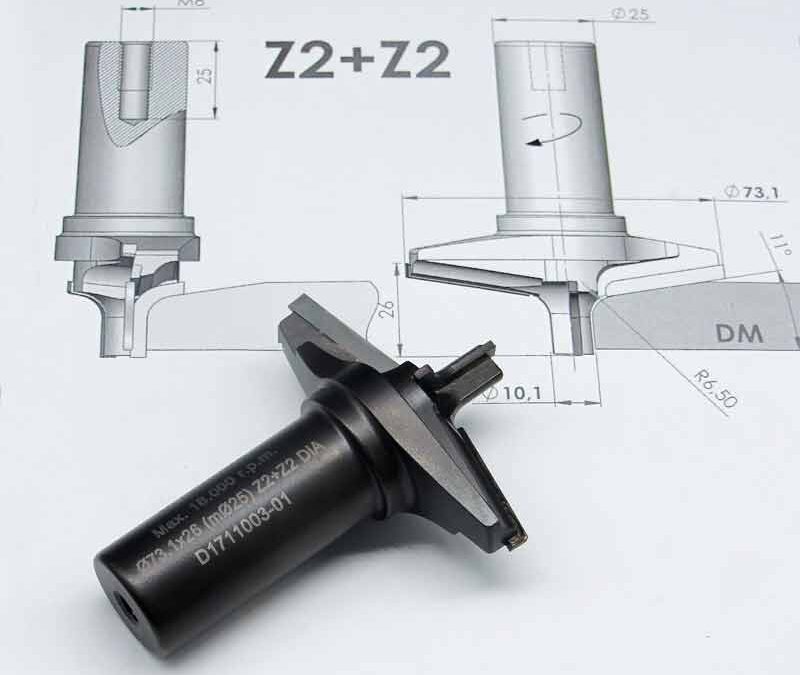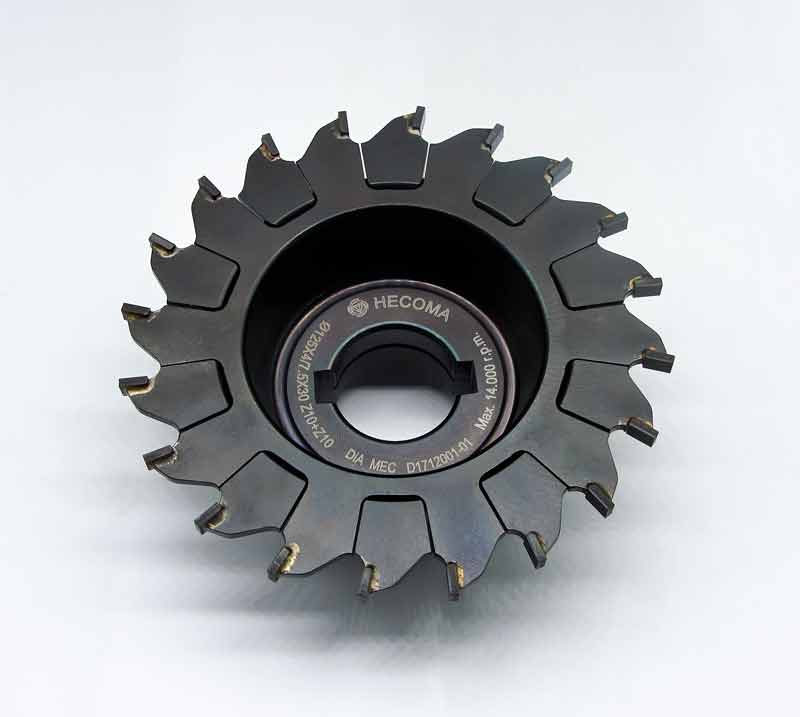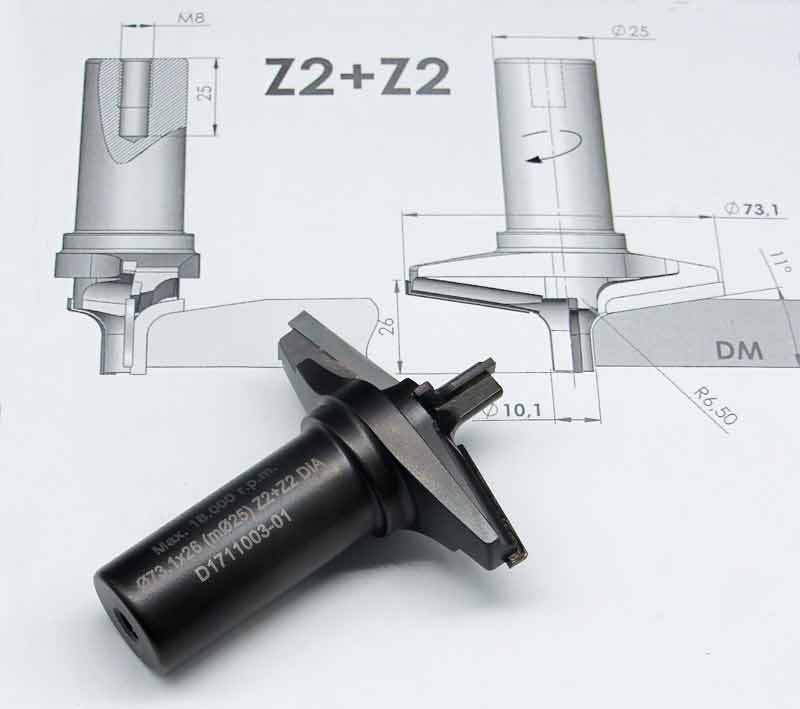Diamond Tools (PCD): between 60 and 150 times the performance of MD
Polycrystalline Diamond (PCD) tools have 60 to 150 times the performance of those made of hard metal (MD).
Polycrystalline diamond (PCD) is one of the best materials for the cutting surfaces of wood and wood-based tools. At HECOMA®, we have been aware of the advantages of this material since we were almost founded, and therefore we specialise in its maintenance and in the manufacture of tools using this material. Let’s find out more about it.
What is PCD (polycrystalline diamond)?
PCD, also called synthetic diamond, is a cutting material made from industrially synthesised diamond. Due to its hardness and resistance to abrasion, it is successfully used in the machining and cutting of wood (and derivatives such as chipboard, MDF, solid surface, etc.), plastic, metal, stone, concrete, etc.
PCD Electro abrasive grinding
Extendable PCD milling cutter
PCD shaft milling cutter
What advantages do they bring us
Tools made (their cutting surfaces) from this material:
- Much better cutting quality, obtaining high quality finishes for longer.
- Much higher performance, due to the durability of the cutting edge, less sharpening processes are required. With a minimum of 60 times more performance, and depending on the work and with proper maintenance, up to 200 times the duration of the best hard metal alloy.
- Ideal for working with the most abrasive materials, because of its hardness it does not wear out like carbide alloys.
- Higher cutting capacity and cutting speed, due to a very effective cutting edge and the fact that it withstands higher working temperatures.
Care and maintenance
Like any tool, it needs some care and maintenance. Below we show you in detail the maintenance process that we carry out at HECOMA®, and how to maintain the tool during its use in the factory:
-
Measuring/checking of tools:
The first step is the projection measurement of damage and wear on the cutting surfaces. The need for precision is very high, which is why our measuring machines use high-magnification image projection. Our technicians visualise all the dimensions of the tool by means of the tool travel. With the help of a measuring computer, the maintenance requirements of the tool are calculated.
-
Automatic calibration of the grinding robot:
To determine the position and size of the PCD cutting edges on the tool, the grinding robot automatically measures the workpiece before each grinding process. By specifying only one point per cutting edge, the machine automatically probes several points on the cutting edge depending on the set value.
-
PCD tool sharpening procedure:
The grinding of PCD tools is carried out without contact with the grinding wheel. The process is called electroerosion. It consists of generating an electric arc between the PCD surface and the grinding wheel (usually made of a copper alloy) in a dielectric medium. Both the workpiece and the grinding wheel must therefore be electrically conductive. There are three different types of erosion processes: penetration erosion, wire erosion and disc/rotation erosion. At HECOMA® we use wire erosion and disc/rotation erosion. These work according to the same principle and achieve excellent results in terms of precision and surface quality.
-
Tips for using the PCD tool:
During use in the factory, a number of measures must be taken to protect and maintain our tools. Cutting surfaces are sensitive to shocks and require a certain amount of care:
- To avoid damage to the PCD plates, care must be taken when handling them, avoiding knocks against metal parts.
- Check the state of wear of the tools, nicks, breaks or defective plates. Most machining machines have an ammeter, which shows the power consumption of the machine at work. High consumption values indicate possible defects of this type in the tool.
- Dust, together with resins, varnishes and glues, can create deposits on the tool. These reduce the cutting efficiency, the chip evacuation capacity or even cause unbalance in the tool. For these reasons, it is necessary to clean the tool regularly, using products suitable for this purpose.
- Insufficient suction and the accumulation of swarf resulting from the work can cause additional wear of the plates, and even breakage of the plates.
- The correct assembly, balancing and condition of the shaft are also essential to avoid damage. It is therefore advisable to check these and use only calibrated bushings, spacer rings and tool holders in perfect condition.
- Once the tool has been assembled, check that the speed, feed and direction of rotation are correct.
-
When to sharpen PCD tools:
A series of tips for detecting when our tool may need maintenance. This guarantees its long life and quality of finish:
- If the quality of the finish on the surface being worked on is not adequate.
- If the wear on your moulder cutter or grooving cutter, circular saw, sliding table saw or panel saw has a plate thickness of 0.2 mm or more. If this is the case, sharpening is indicated.
- If the current consumption of the spindle motor is high, and there are no breaks in the plates and they are clean, the cutting edge of the plates is exhausted.
- If any plate is chipped, it should be replaced or sharpened.
HECOMA® Cutting Tool Services – profitability for your business.
contact with HECOMA®
We manufacture tools for perfect performance




